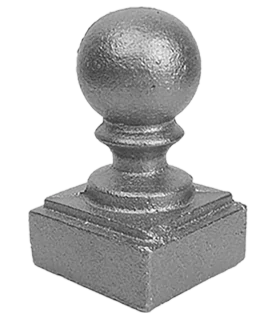Comparing Wrought Iron and Cast Iron Properties and Uses in Construction and Craftsmanship
Wrought Iron vs. Cast Iron Understanding the Differences
When it comes to understanding iron and its various forms, two primary types stand out wrought iron and cast iron. Both materials have been utilized for centuries in construction, manufacturing, and decorative arts, yet they possess distinct properties and characteristics that make them suitable for different applications. This article will delve into the comparison between wrought iron and cast iron, highlighting their differences in terms of composition, manufacturing processes, physical properties, and uses.
Composition and Manufacturing Processes
Wrought iron is primarily composed of iron, with a low carbon content, usually less than 0.08%. This low carbon content contributes to its malleability, allowing it to be easily shaped and forged. Wrought iron is produced through a process known as wroughting, which involves heating iron ingots and working it mechanically, often through hammering or rolling. This process not only shapes the iron but also removes impurities, resulting in a product that is both strong and ductile.
In contrast, cast iron contains a higher carbon content, typically between 1.5% and 4%. This elevated carbon level gives cast iron its characteristic brittle nature. The manufacturing process of cast iron involves melting iron along with its alloying elements in a furnace. The molten iron is then poured into molds, where it solidifies into the desired shape. This process allows for intricate designs and complex shapes, making cast iron a popular choice for items like cookware and decorative elements.
Physical Properties
One of the fundamental differences between wrought iron and cast iron lies in their physical properties. Wrought iron is known for its excellent tensile strength and malleability, making it an ideal material for structures that require bending and shaping without breaking. Its ability to deform without fracture allows it to endure dynamic forces, making it suitable for applications such as railings, gates, and architectural elements.
wrought iron vs iron

Conversely, cast iron is highly rigid and exhibits a high compressive strength, making it resistant to deformation under weight. However, its brittleness means that it can shatter or crack under tensile stress or harsh impacts. This property makes cast iron unsuitable for applications where flexibility is required but ideal for environments where rigidity is needed, such as in the construction of engine blocks, pipes, and heavy machinery components.
Uses and Applications
The distinctions in their properties lead to different applications for wrought iron and cast iron. Wrought iron has historically been favored for ornamental work and structural applications due to its aesthetic appeal and workability. Gates, fences, and decorative railings often utilize wrought iron because it can be beautifully crafted into intricate designs.
On the other hand, cast iron is widely used in applications that require a material that can withstand heavy loads and resist wear over time. Its durability makes it a common choice for cookware, especially cast iron skillets and Dutch ovens, which provide excellent heat retention and distribution. Additionally, cast iron is extensively used in plumbing and drainage pipes due to its robustness and ability to handle high pressures.
Conclusion
In summary, while both wrought iron and cast iron are iron alloys with unique properties and applications, they serve different purposes in various industries. Wrought iron, with its low carbon content, malleability, and strength, is ideal for decorative and structural applications. In contrast, cast iron's higher carbon content gives it durability and rigidity, making it suitable for heavy-duty uses and intricate designs. Understanding these differences can help in selecting the right type of iron for specific projects, ensuring optimal performance and longevity. Whether it’s for aesthetics or function, both wrought and cast iron have left an indelible mark on industries around the globe.
-
Window Lock Handle for Security UpgradesNewsJun.20,2025
-
Proper Lubrication Techniques for Sliding Gate WheelsNewsJun.20,2025
-
Ornamental Iron Castings for Interior DesignNewsJun.20,2025
-
Creative Ways to Decorate Around a Cast Iron FireplaceNewsJun.20,2025
-
Cast Iron Pipe and Fitting for Plumbing SystemsNewsJun.20,2025
-
Cast Iron Panel Casting for Architectural ElementsNewsJun.20,2025















